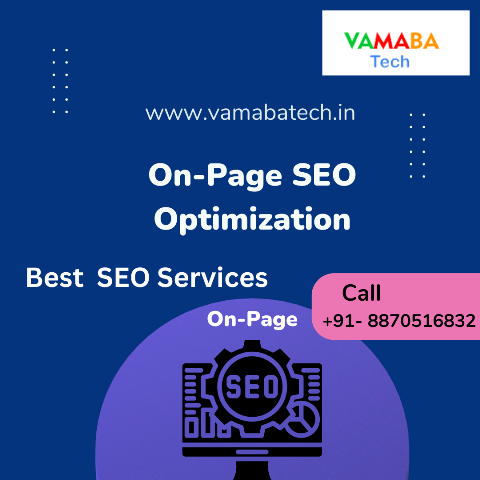Writing SEO-Friendly Content for Beginners
As you start creating content for your online presence, you're probably aware that search engine optimization (SEO) is vital for reaching your target audience. But what does it take to write SEO-friendly content that actually resonates with both users and search engines? It's not just about stuffing keywords into your text or using clever tricks. To boost your online visibility, you need a solid understanding of SEO basics and a strategic approach to content creation. But where do you even start? Let's take a closer look at the fundamentals of writing SEO-friendly content that drives real results.
Key Takeaways
- Understand the basics of SEO, including search engine algorithms and keyword usage.
- Choose relevant keywords with high search volume and group them using keyword clustering.
- Craft a compelling title that incorporates catchy phrases and relevant keywords.
- Organize content using a clear hierarchy, headings, and visual flowpoints.
Understanding SEO Basics
Before you plunge into creating SEO-friendly content, you need to understand what SEO actually entails, which can seem complex at first, but can be broken down into some core concepts.
Think of SEO as a way to communicate with search engines, helping them understand your content and rank it accordingly.
A search engine's primary goal is to provide users with the most relevant and useful results.
To achieve this, they use complex algorithms that analyze various factors, such as keyword usage, content quality, and user experience.
As a content creator, it's vital to stay current with the latest algorithm updates to guarantee your content remains optimized.
Algorithm updates can vastly impact your search engine rankings, so it's imperative to adapt to these changes.
By understanding how search engines work and staying informed about algorithm updates, you'll be better equipped to create content that resonates with both users and search engines.
This foundation will help you build a solid SEO strategy, increasing your online visibility and driving more traffic to your website.
Choosing the Right Keywords
When it comes to crafting SEO-friendly content, selecting the right keywords is crucial, as it directly impacts how search engines understand and rank your content, and ultimately, how users find it.
You'll want to choose keywords that are relevant to your content and have a high search volume.
Start by brainstorming a list of keywords related to your topic.
Then, use keyword clustering to group similar keywords together. This will help you identify patterns and themes in your keywords.
Next, consider using a long tail strategy to target more specific phrases with lower competition.
For example, instead of targeting 'fitness tips', try 'fitness tips for beginners' or 'home workout routines for weight loss'.
Crafting a Compelling Title
You'll hook your audience from the start by crafting a compelling title that accurately reflects your content and resonates with your target audience, making it a pivotal step in the SEO-friendly content creation process. A well-crafted title can make all the difference in enticing readers to click on your article and engage with your content.
To create a title that grabs attention, you'll want to incorporate catchy phrases and emotional triggers that speak directly to your audience's needs and interests.
Use action verbs and questions to create a sense of intrigue and curiosity. Incorporate relevant keywords to improve search engine visibility. Make it concise and to-the-point, avoiding unnecessary words and phrases. Use emotional triggers like 'how-to' or 'tips' to create a sense of urgency and importance.
Optimizing Content Structure
By capturing attention with your title, it's time to turn readers into engrossed fans of your content – and a well-organized, SEO-optimized content structure can do just that, keeping your audience hooked and moving seamlessly through your article.
You've got their attention, now it's time to guide them through your content with a clear content hierarchy. This means organizing your content into logical sections, using headings (H1, H2, H3, etc.) to create a visual flow that's easy to follow. Think of it like a roadmap, directing readers through your article and highlighting key points along the way.
Visual flowpoints, such as subheadings, bullet points, and short paragraphs, also play a vital role in optimizing your content structure. They break up large blocks of text, making it easier for readers to scan and understand your content.
Measuring SEO Success Metrics
As you've optimized your content structure to guide readers through your article, it's vital to track the performance of your SEO efforts to see what's working and what needs improvement. Measuring your success metrics will help you refine your strategy and boost your online presence.
To gauge your SEO performance, focus on these key metrics:
Organic traffic: Monitor the number of visitors coming from search engines to see if your content is attracting the right audience.
Bounce rate: Analyze the percentage of visitors leaving your site immediately to identify areas for improvement in user experience and content relevance.
Conversion rate: Track the number of visitors completing a desired action (e.g., filling out a form or making a purchase) to see if your content is driving results.
SEO audits: Regularly review your site's technical performance, keyword usage, and content quality to identify areas for optimization and improvement.
Frequently Asked Questions
Can I Use the Same Keyword Multiple Times on a Page?
You're wondering if you can reuse a keyword multiple times on a page. Be cautious not to fall into keyword stuffing, as it's penalized by search engines. Instead, aim for keyword clustering, where you naturally group related terms.
How Often Should I Update My Seo-Friendly Content?
You should update your content regularly to keep it fresh and relevant. Aim for a content refresh every 6-12 months to incorporate fresh perspectives and stay ahead of the competition, don't let it stagnate.
Do I Need to Be an Expert to Write SEO Content?
You don't need to be an SEO expert to write SEO content. Focus on creating high-quality content that resonates with your audience, and then learn the basics of SEO specialization to inform your content strategy.
Can I Use SEO Techniques on Social Media Platforms?
You can definitely use SEO techniques on social media platforms to boost your online presence. By sharing valuable content, you'll increase social signals and amplify your reach through content amplification, driving more traffic to your website.
Does SEO Work for Non-English Language Content?
You're wondering if SEO works for non-English content. Yes, it does! However, you'll need to weigh language barriers and cultural nuances to effectively optimize your content for international audiences and search engines.
Conclusion
By now, you've learned the fundamentals of writing SEO-friendly content that resonates with both readers and search engines.
Remember, it's all about creating high-quality, user-centric content that incorporates relevant keywords naturally.
Craft compelling titles, organize your content with a clear hierarchy, and measure your SEO success metrics to refine your strategy.
With these basics under your belt, you're ready to boost your online visibility and drive more traffic to your site.







